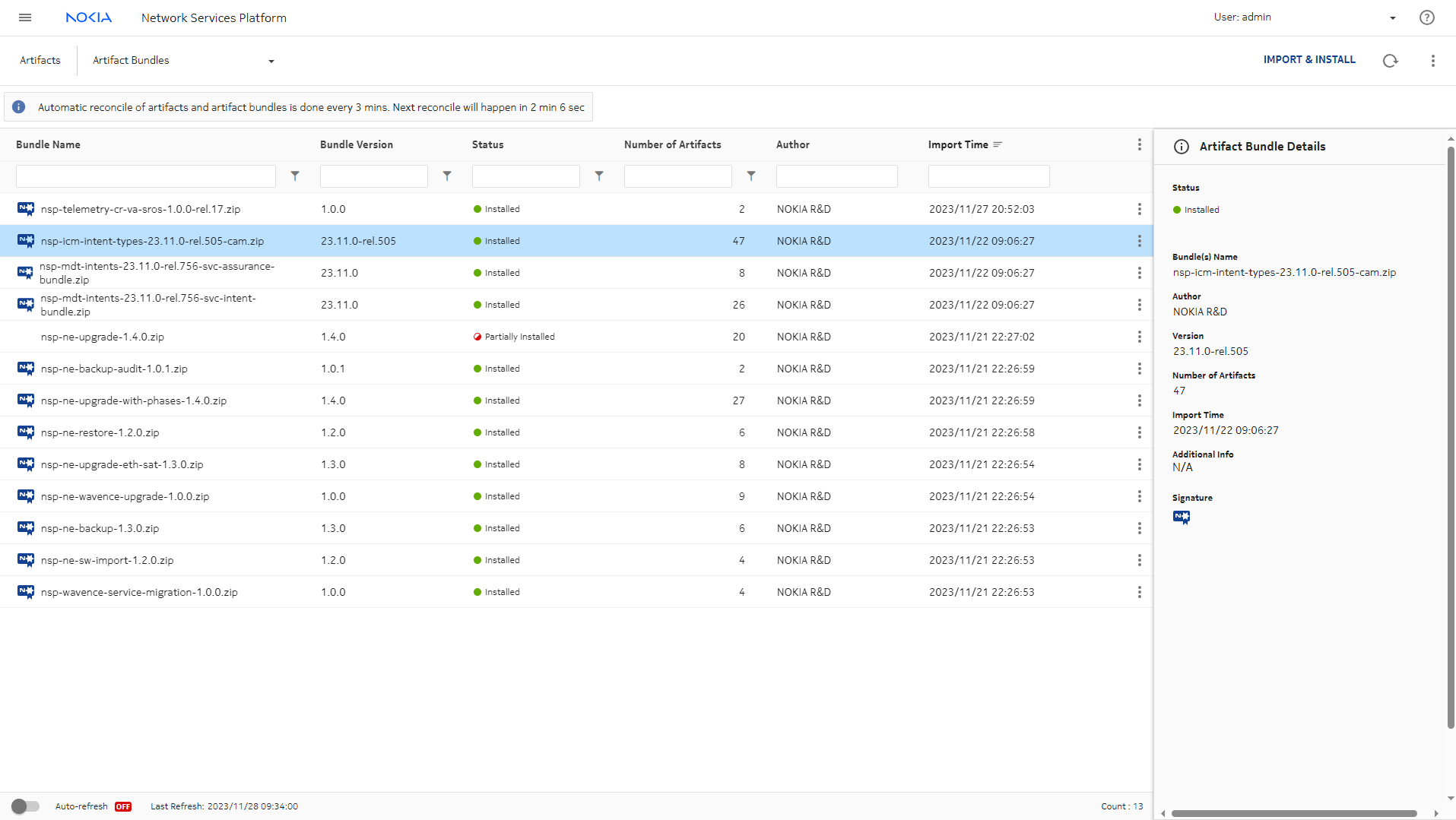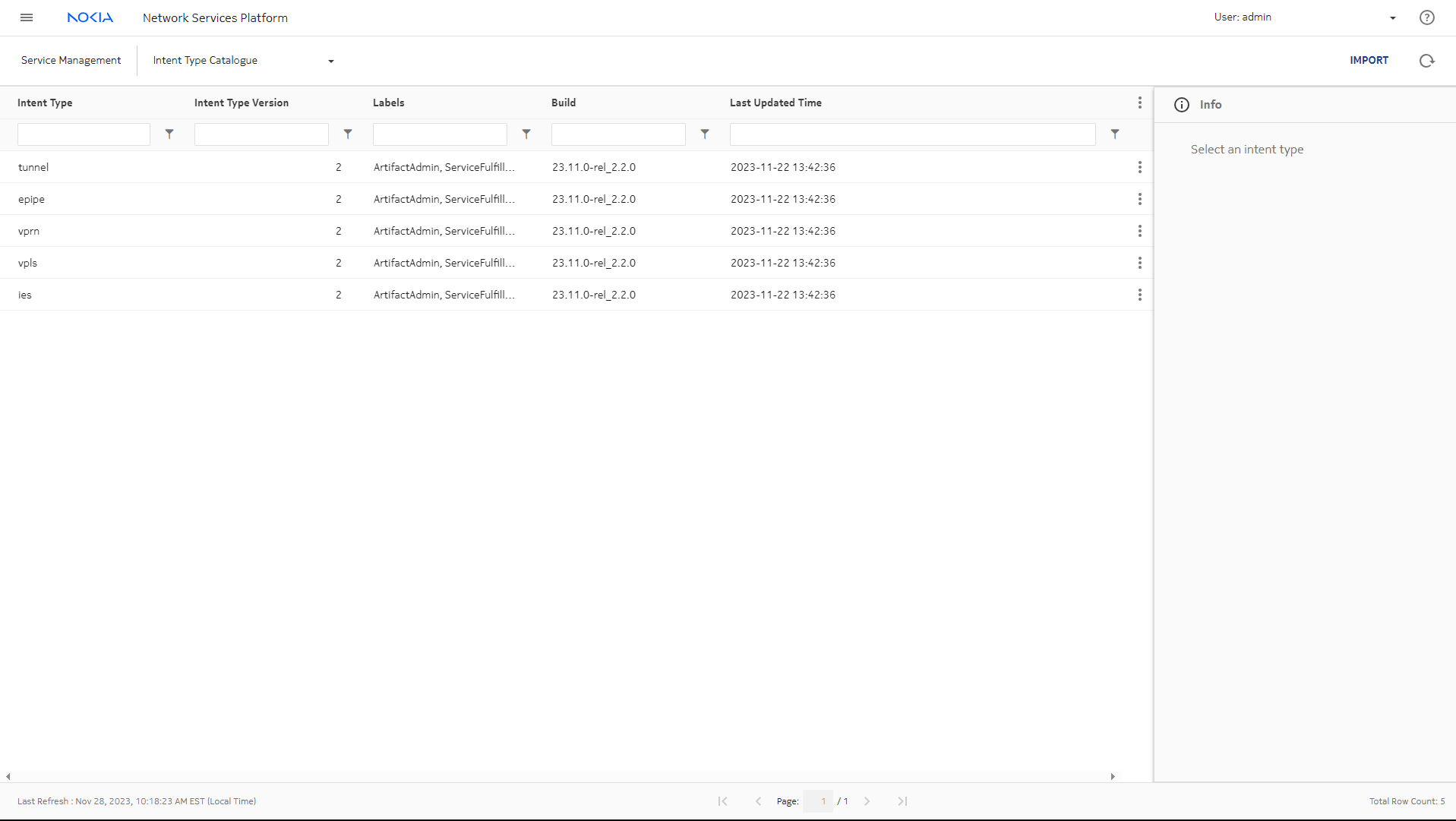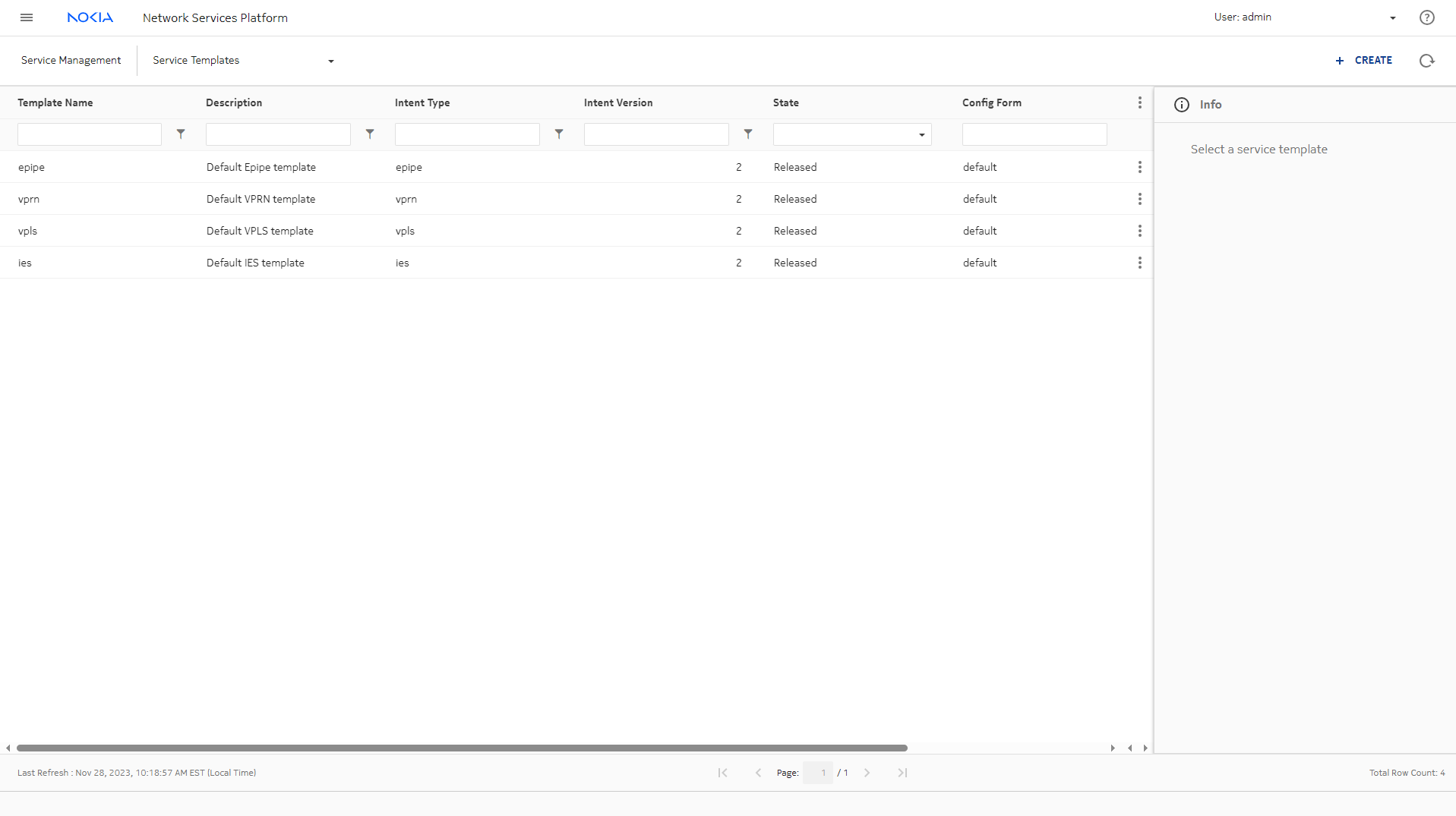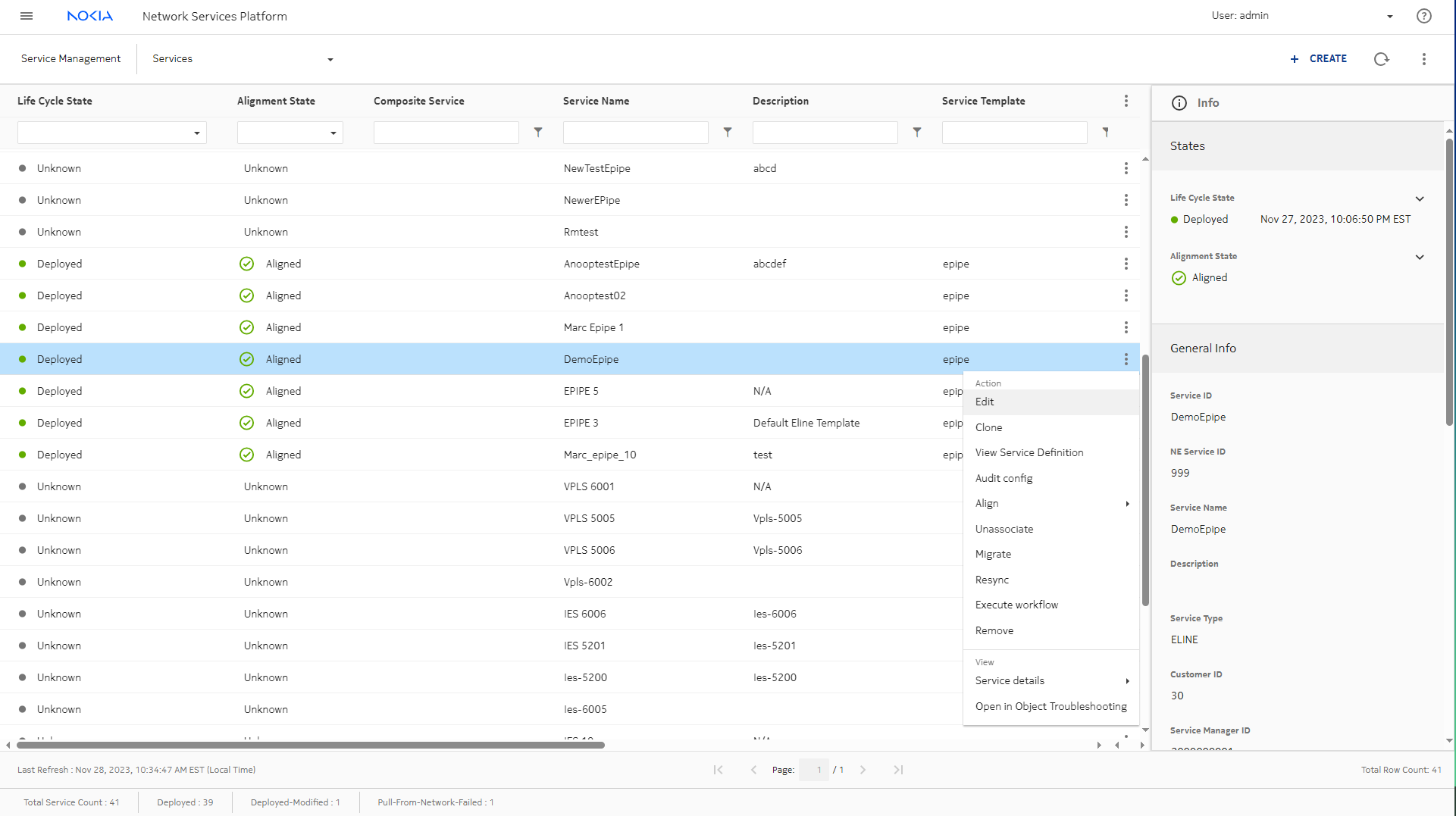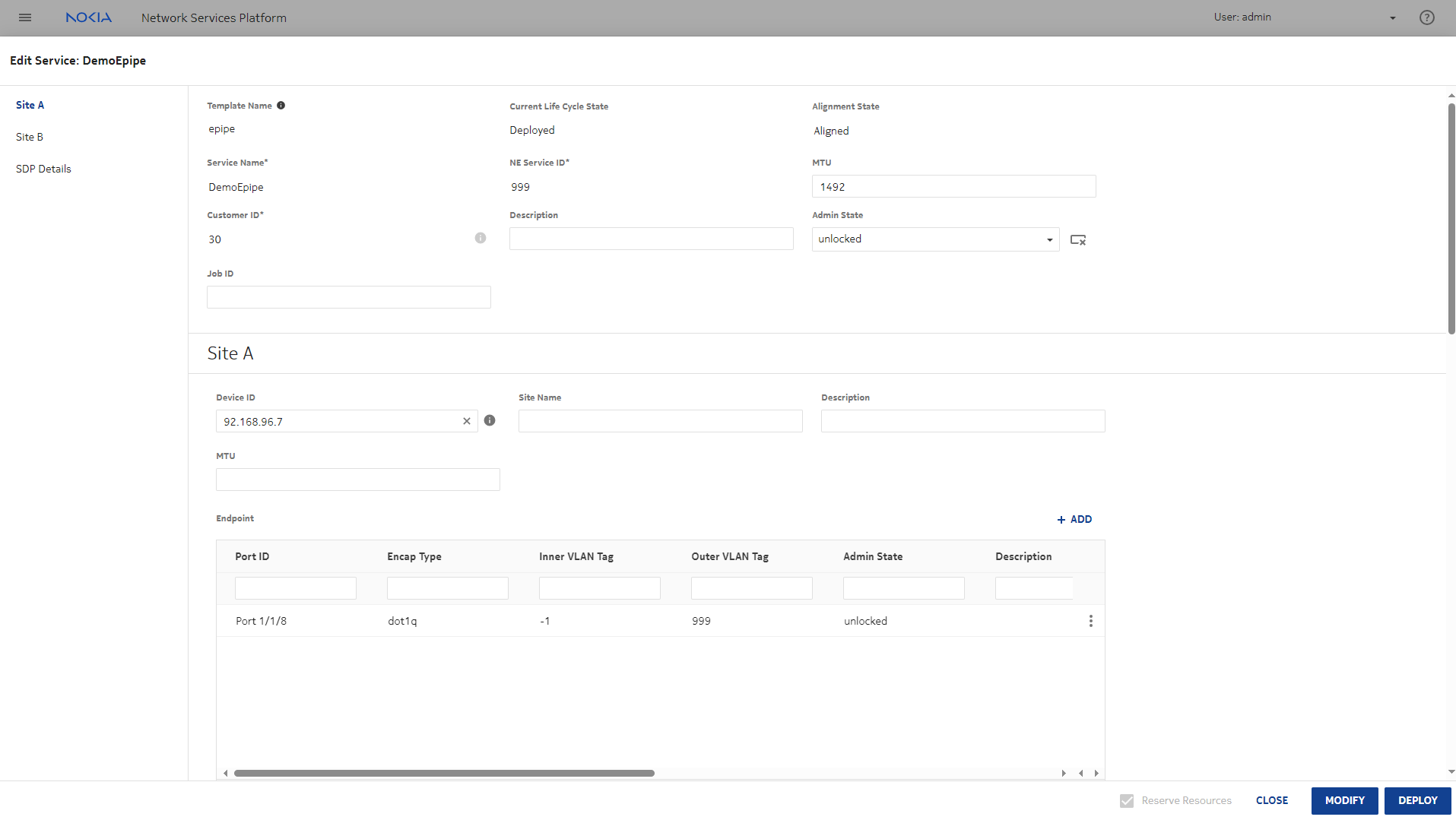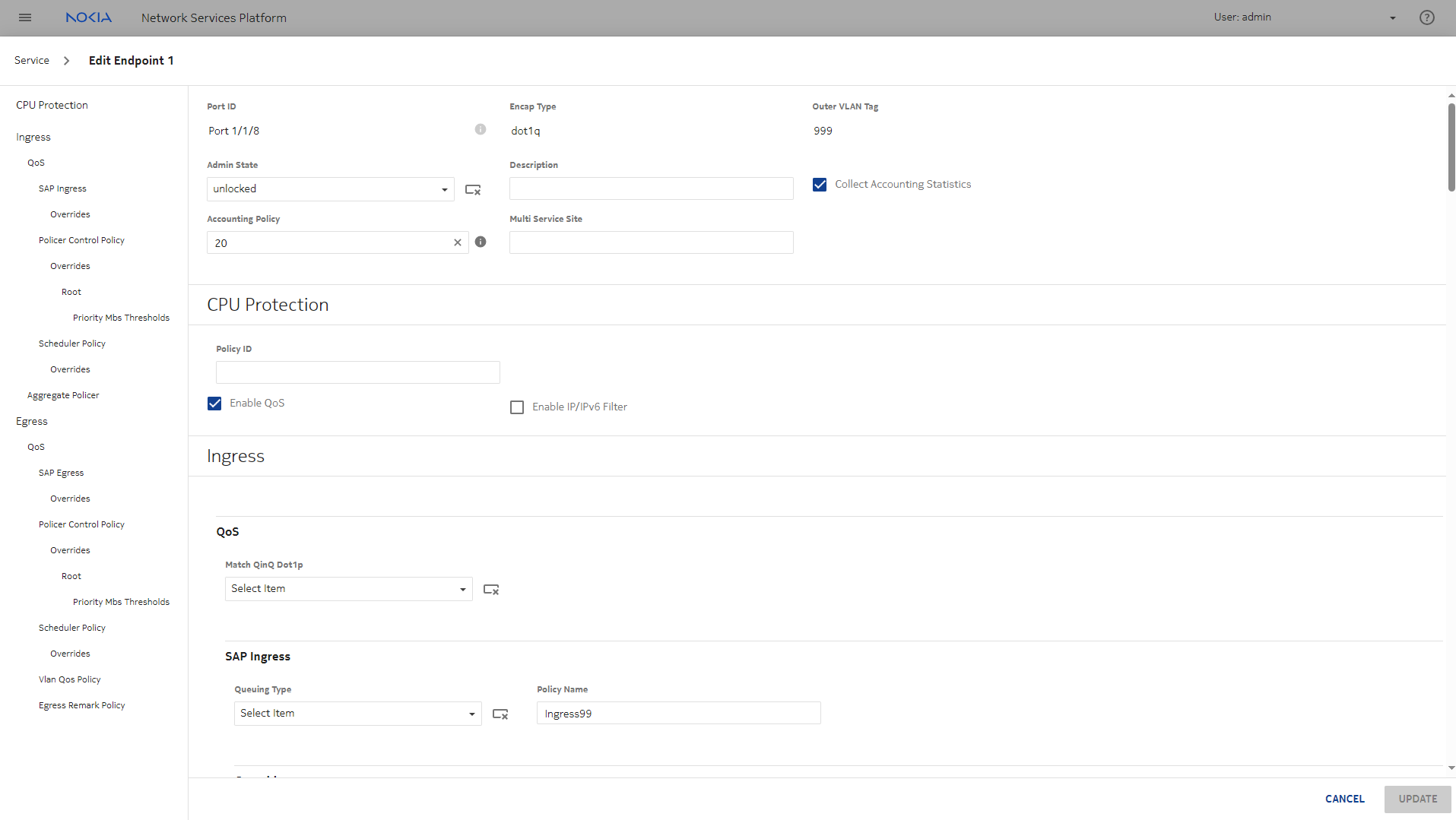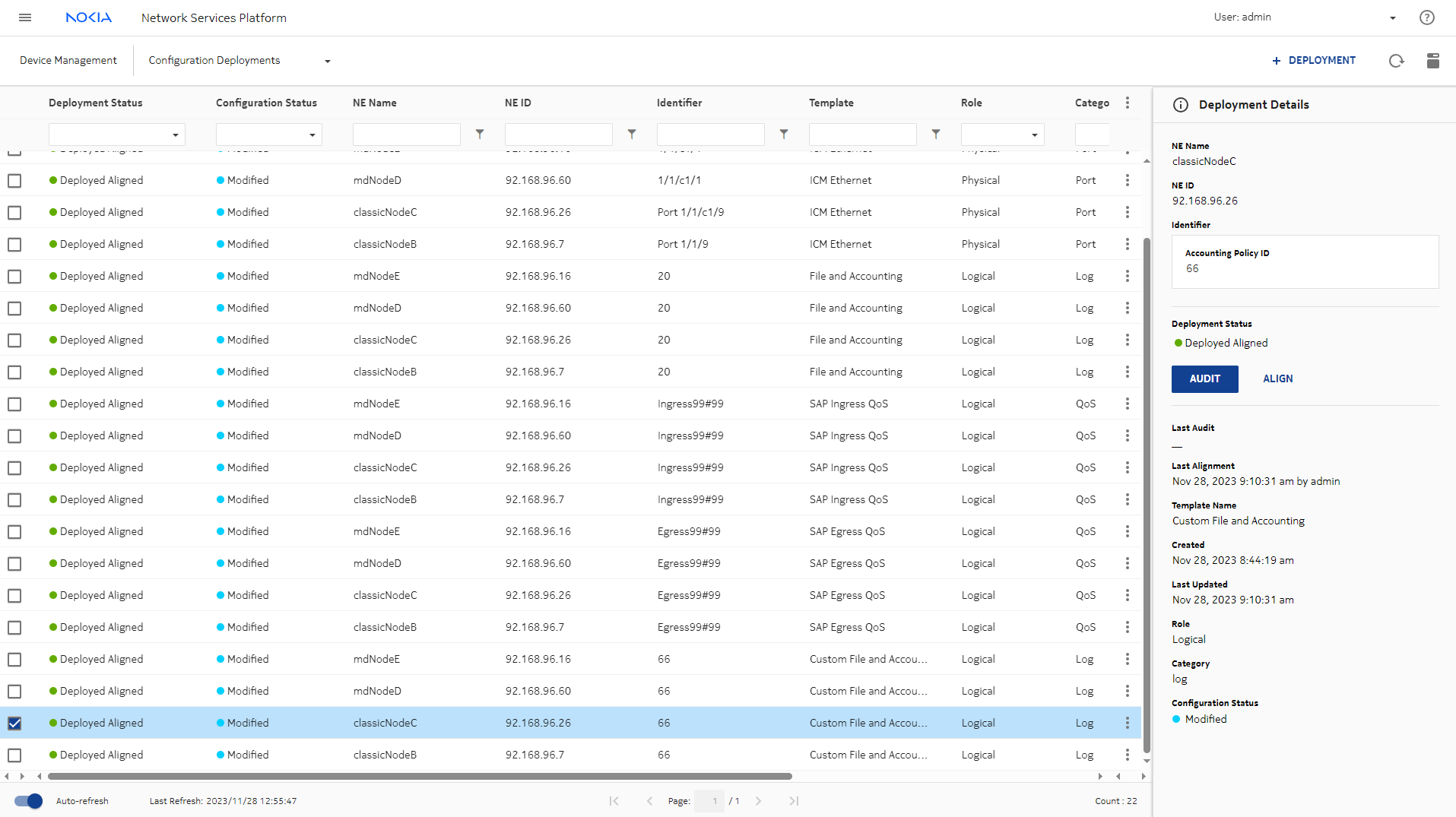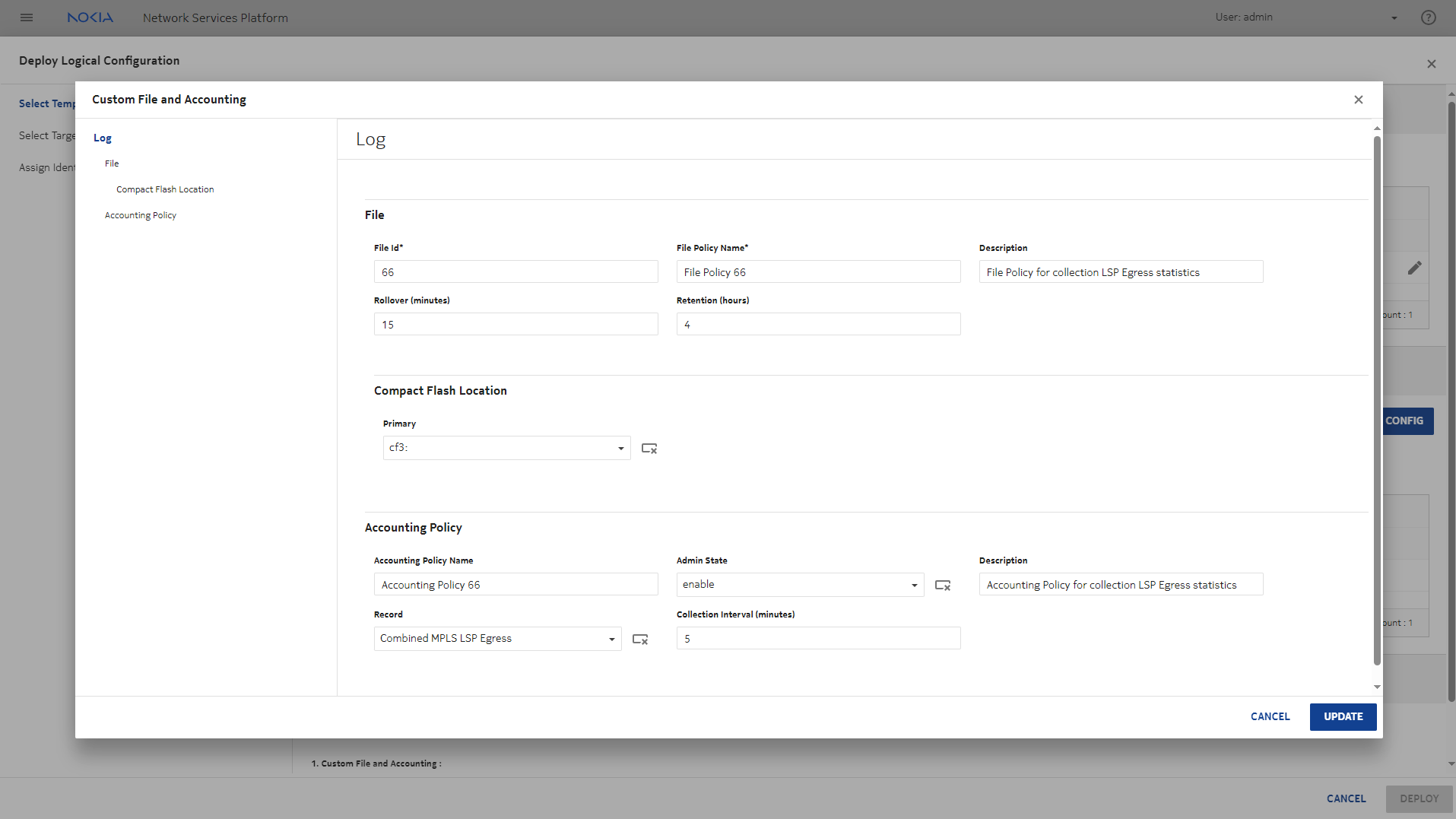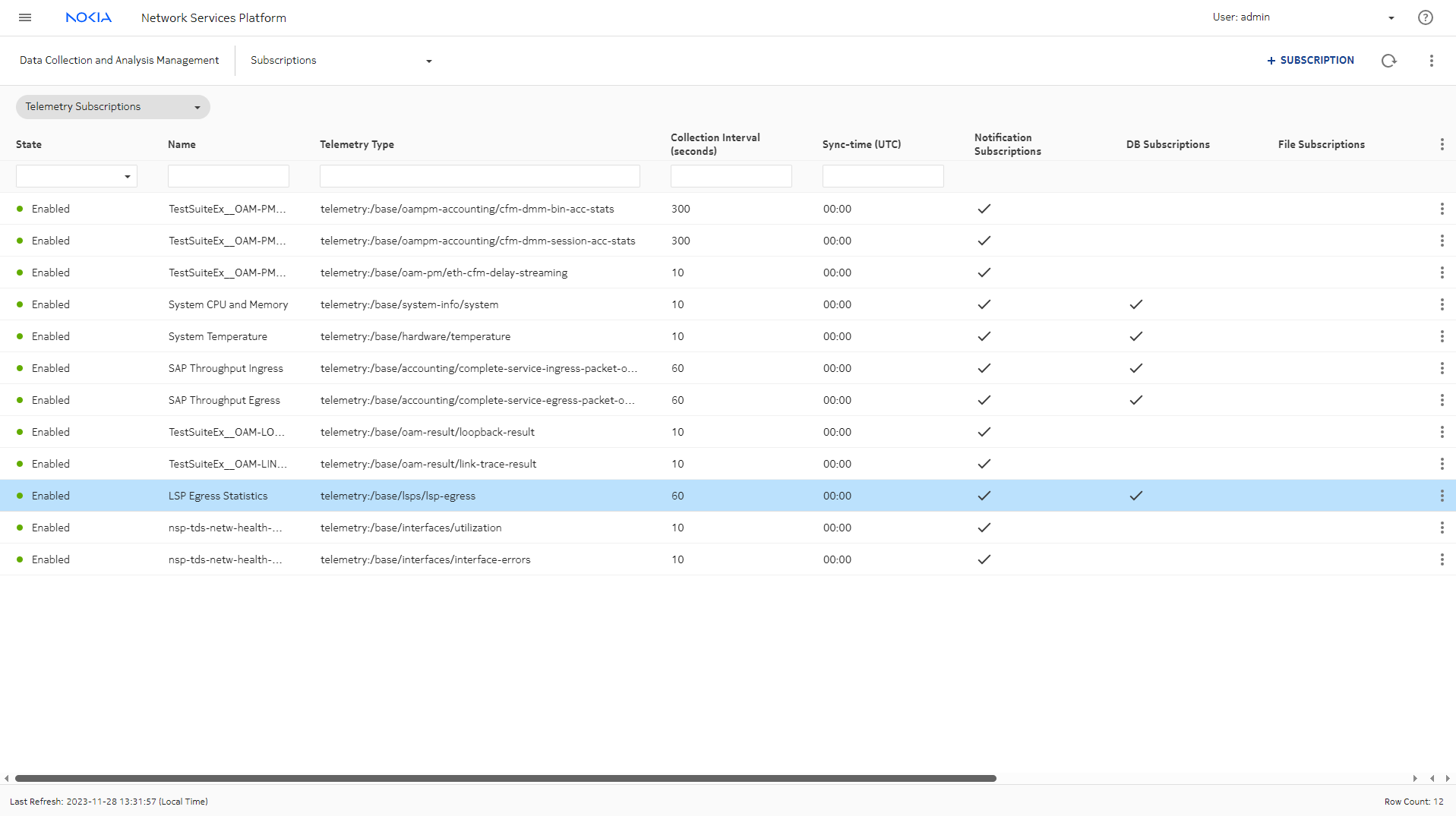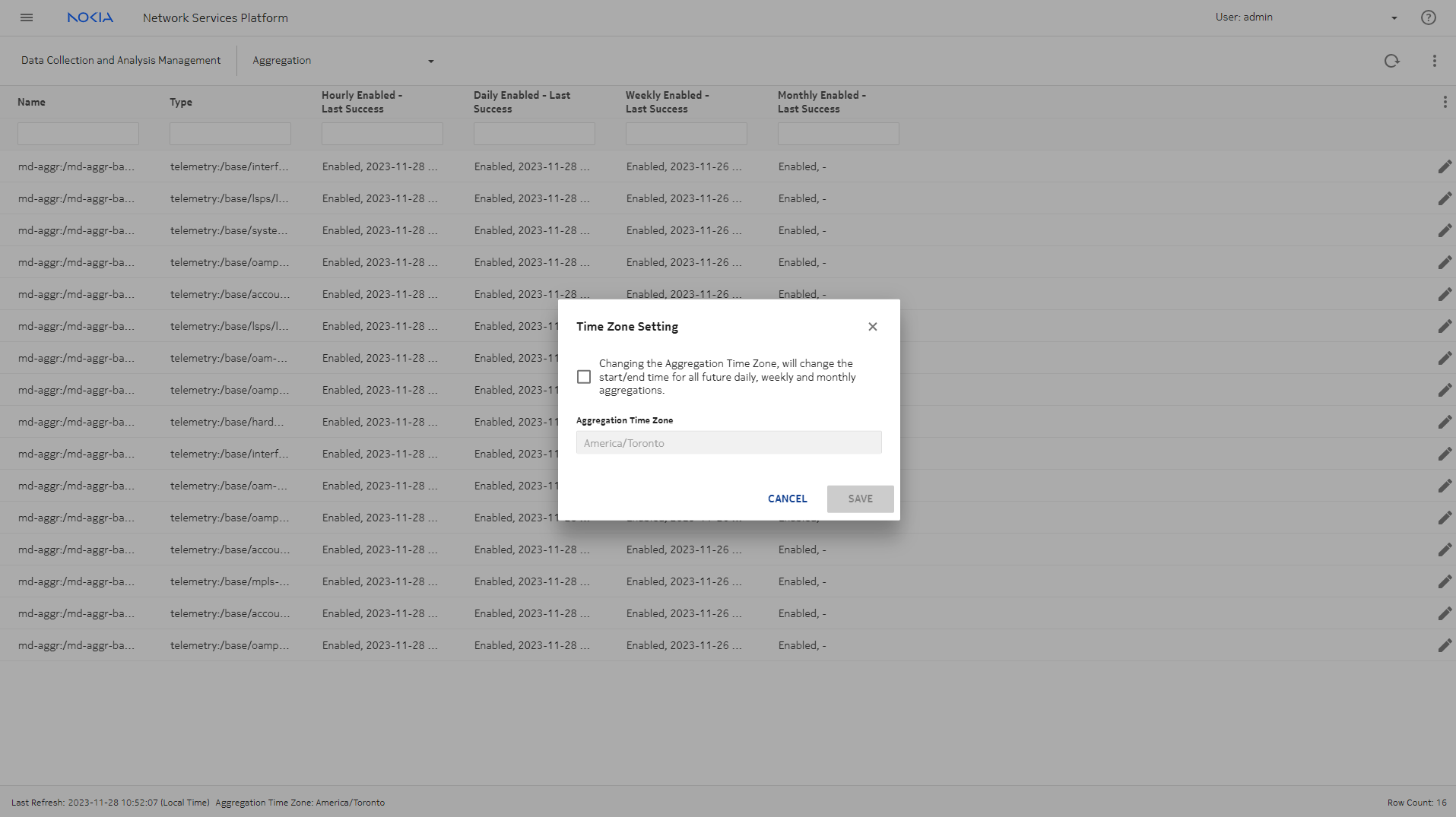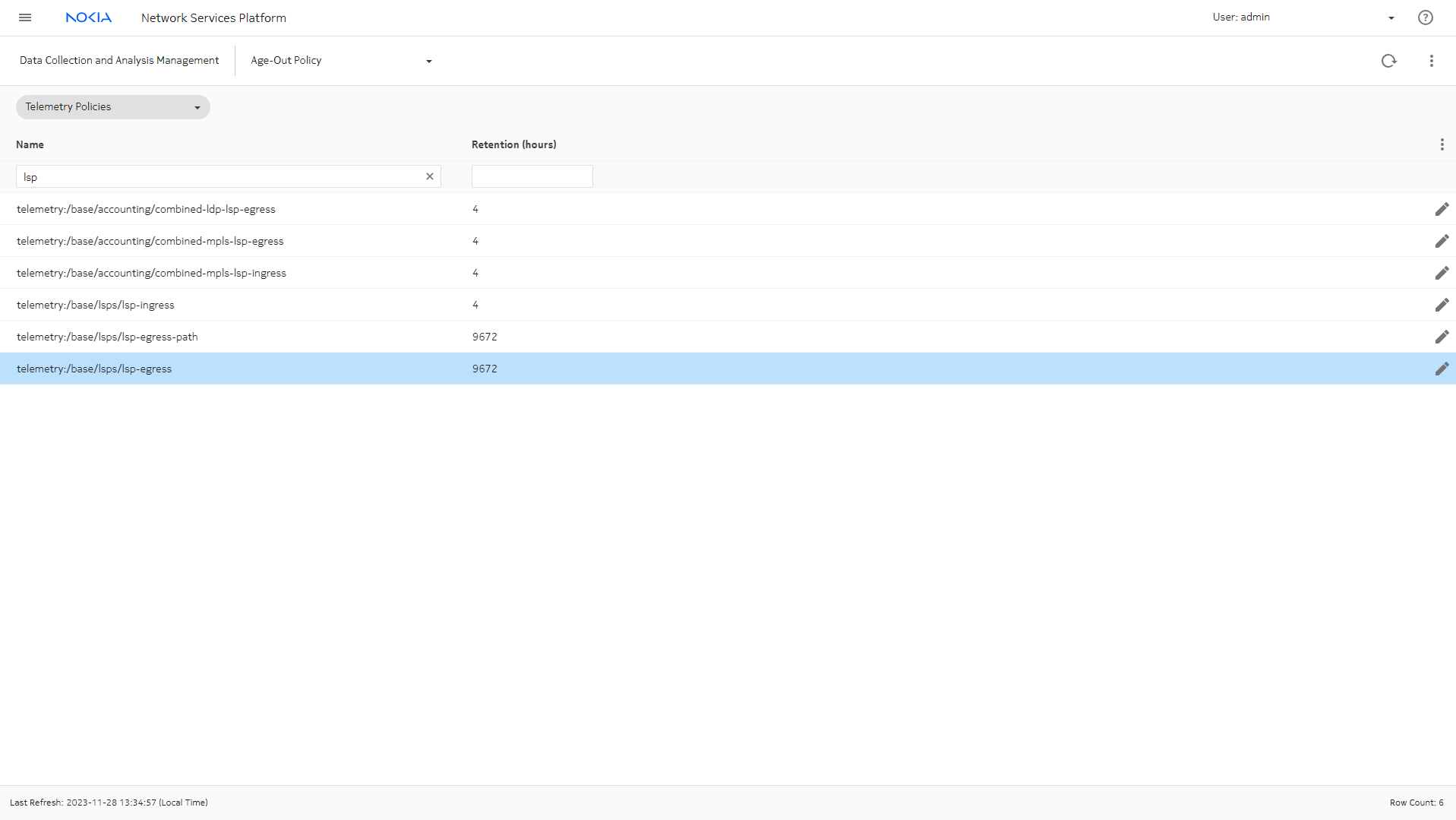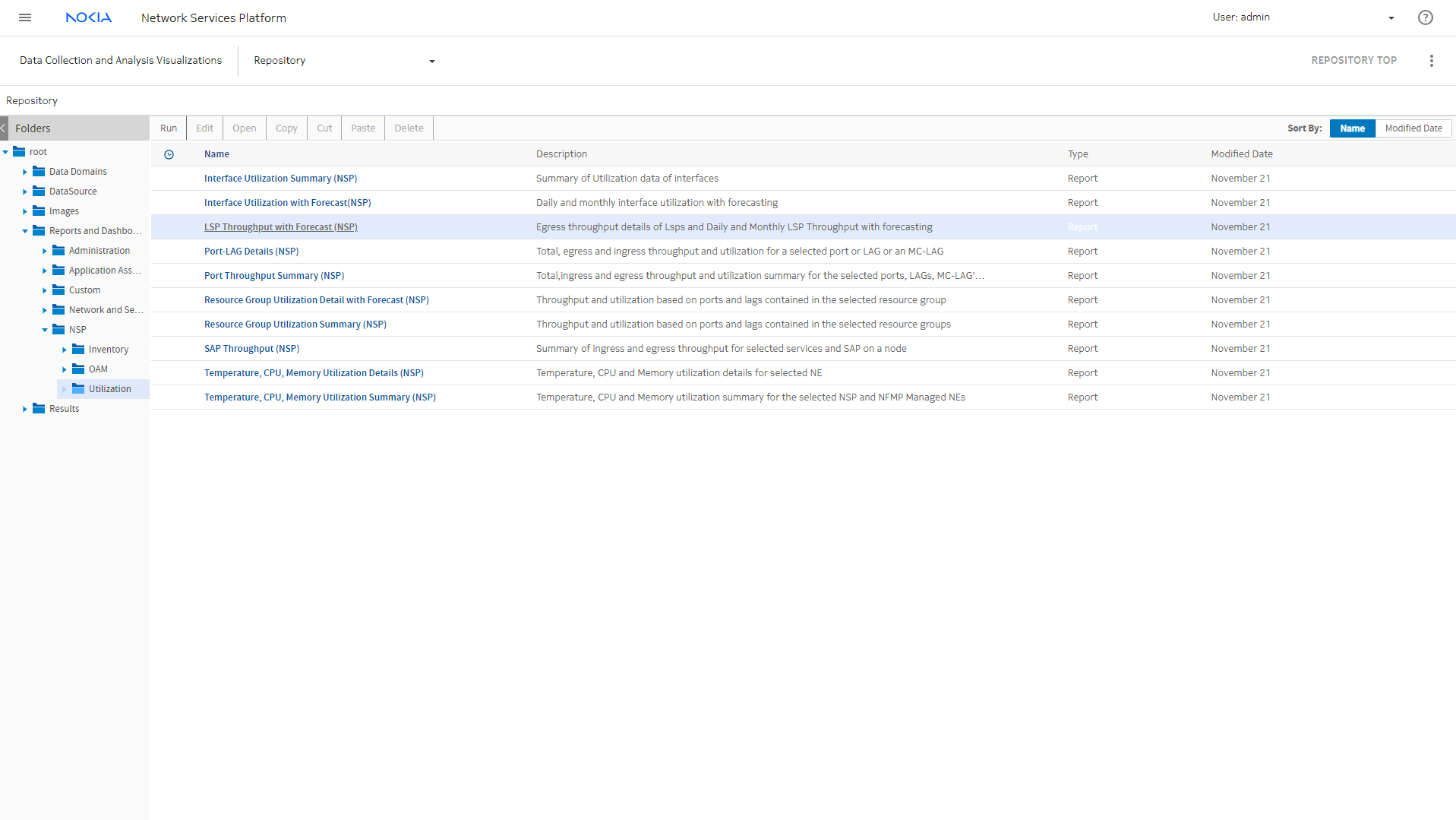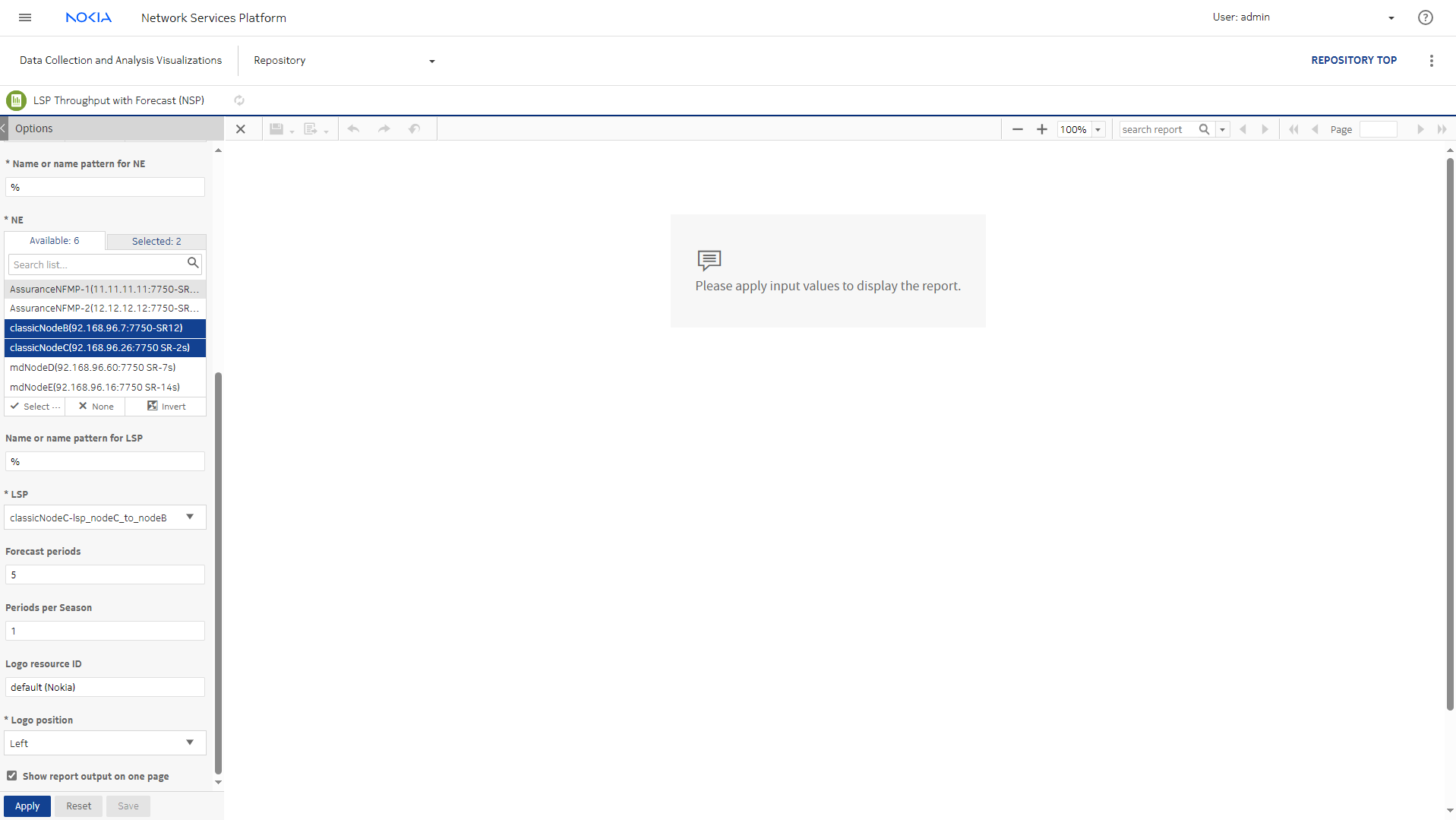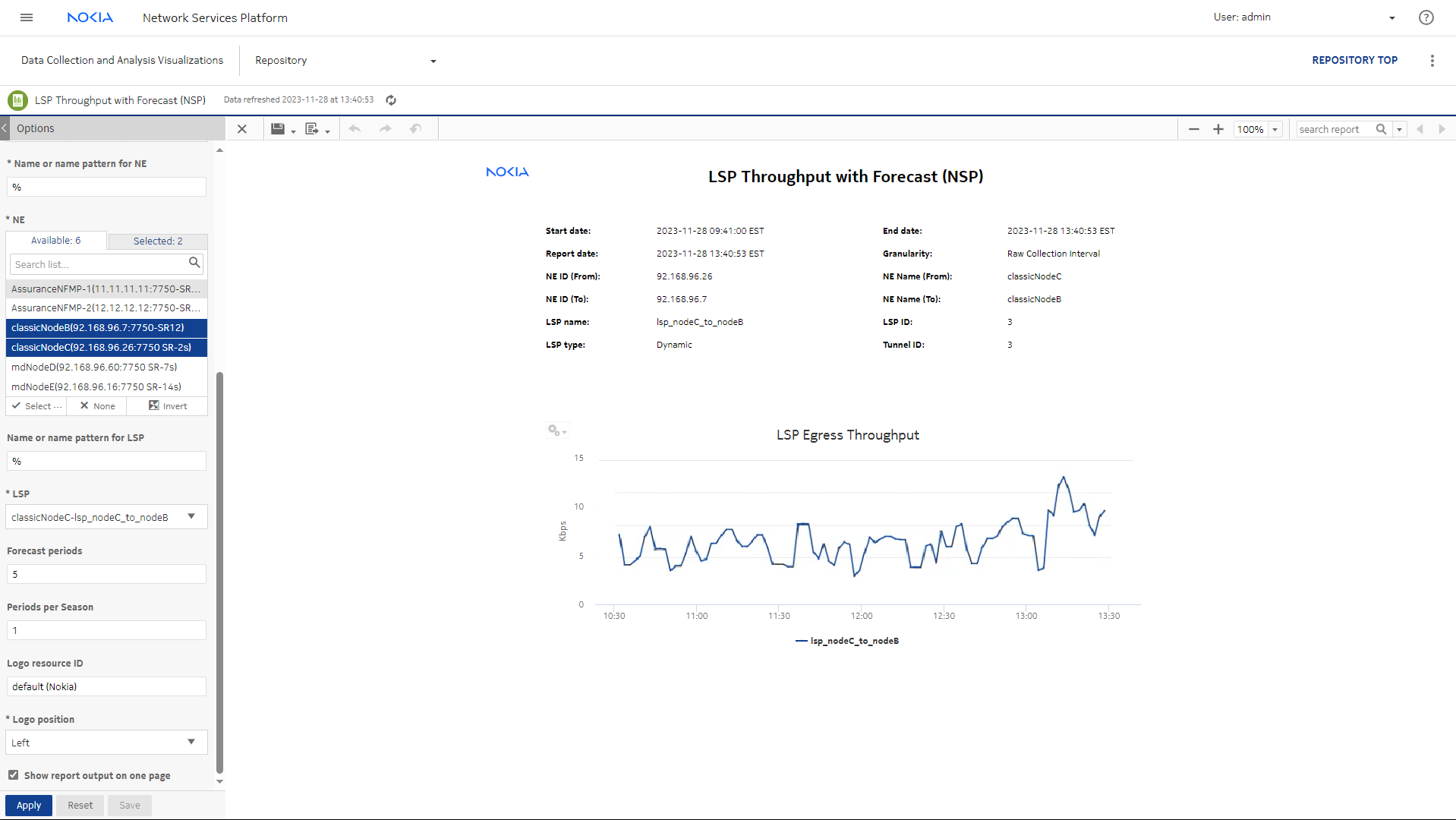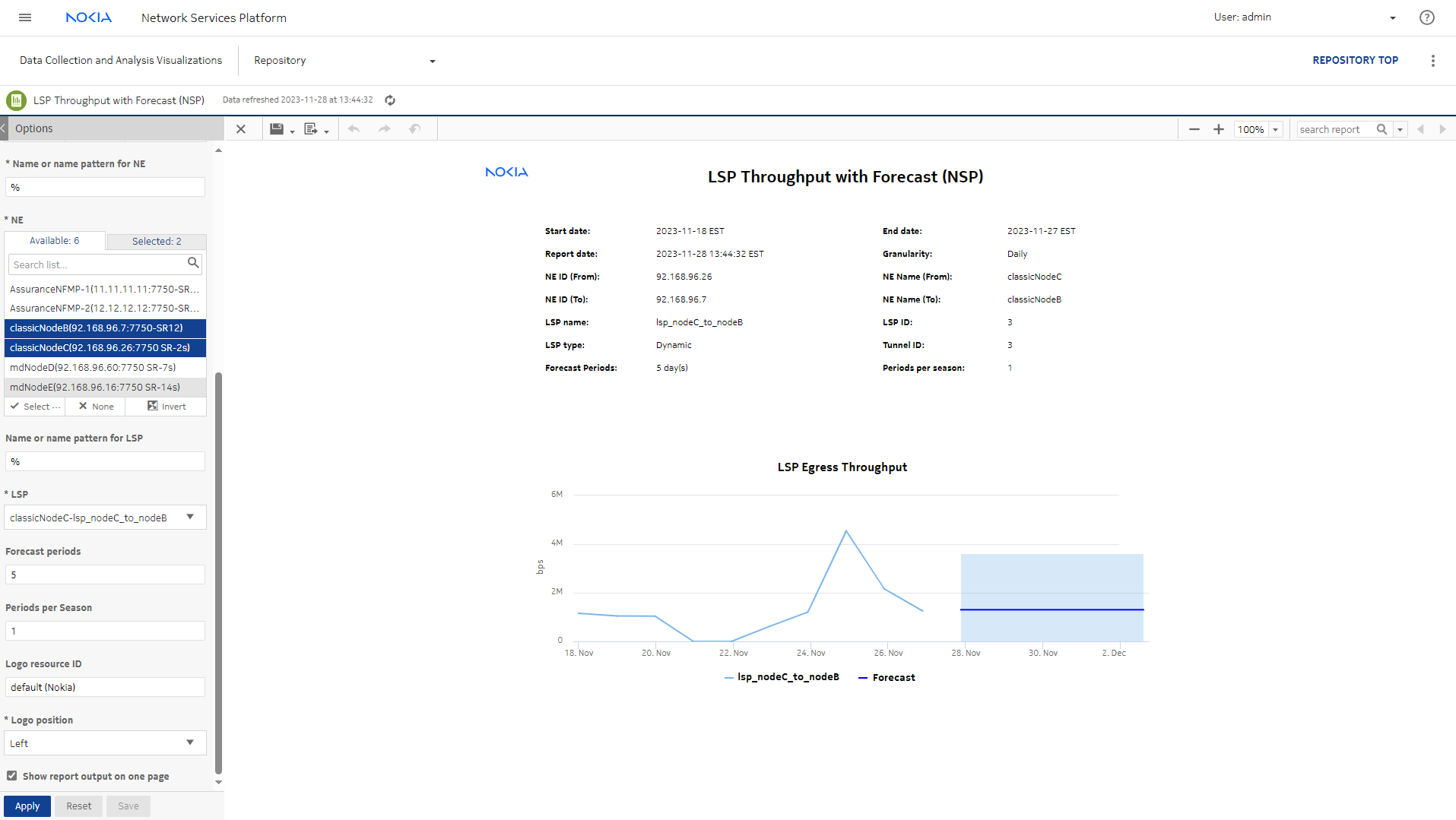LSP Throughput with Forecast reporting scenario
Purpose
The LSP Throughput with Forecast (NSP) report provides the throughput trend for an LSP. The report can generate a forecast for daily and monthly granularities.
This process shows how to set up a service for LSP Throughput with Forecast reporting in Analytics.
Confirm that prerequisites for service provisioning are completed
Verify the service parameters
Verify accounting policy configuration
Verify the LSP parameters
Verify statistics collection configuration
Now that we have verified that the service and LSP are configured, we can confirm that statistics collection has been set up.
Generate the report in Analytics
Now that we’ve confirmed that all the prerequisites are in place, we can run the report.
